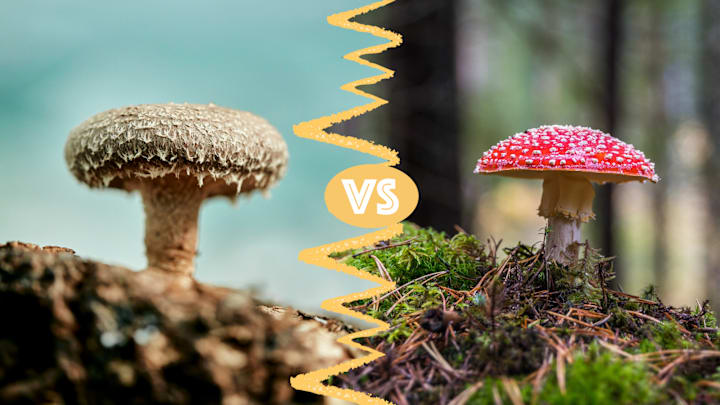According to the Institute of Microbiology of the Czech Academy of Sciences, there are more than 6 million species of fungi worldwide, many of which are mushrooms. People tend to confuse them with toadstools because they look similar. Their definitions aren’t clear-cut, but knowing the general differences between the two can possibly prevent sickness.
The Difference Between Mushrooms and Toadstools
While there are no biological differences separating toadstools and mushrooms as groups, the former label often refers to poisonous fungi. The latter typically defines an edible fungus. Again, these explanations aren’t definitive, as there’s no scientific way to differentiate the two categories. Things get complicated when you factor in poisonous mushrooms like the death cap mushroom, which can cause kidney damage and—as the name suggests—death.
As GroCycle puts it, you can say that “all toadstools are types of mushrooms, but not all mushrooms are toadstools.” However, both are classified as the fruiting bodies of a fungus.
The Origins of Toadstool
So where did the term toadstool come from, anyway? The exact history of the word is hazy, but experts have some ideas. Some believe the name toadstool came from toads. The amphibians were known for carrying toxins and disease, so toxic fungi became associated with them. Fungi were also tied to witches and evil spirits in the Middle Ages, as they caused deaths and illnesses that were poorly understood at the time.
Consuming poisonous mushrooms or toadstools can lead to many issues, like vomiting, diarrhea, hallucinations, liver failure, and death. No home test can determine if a fungus is poisonous, so it’s recommended that you don’t forage for them unless you are an expert. Consider only eating mushrooms from a grocery store, farmers market, or supermarket.
If you feel confident in your foraging abilities—or if you’re working with an expert—you can check out regional fungi guides or these mushroom identification apps for tips on finding edible mushrooms in the wild.
Read About More Differences:
